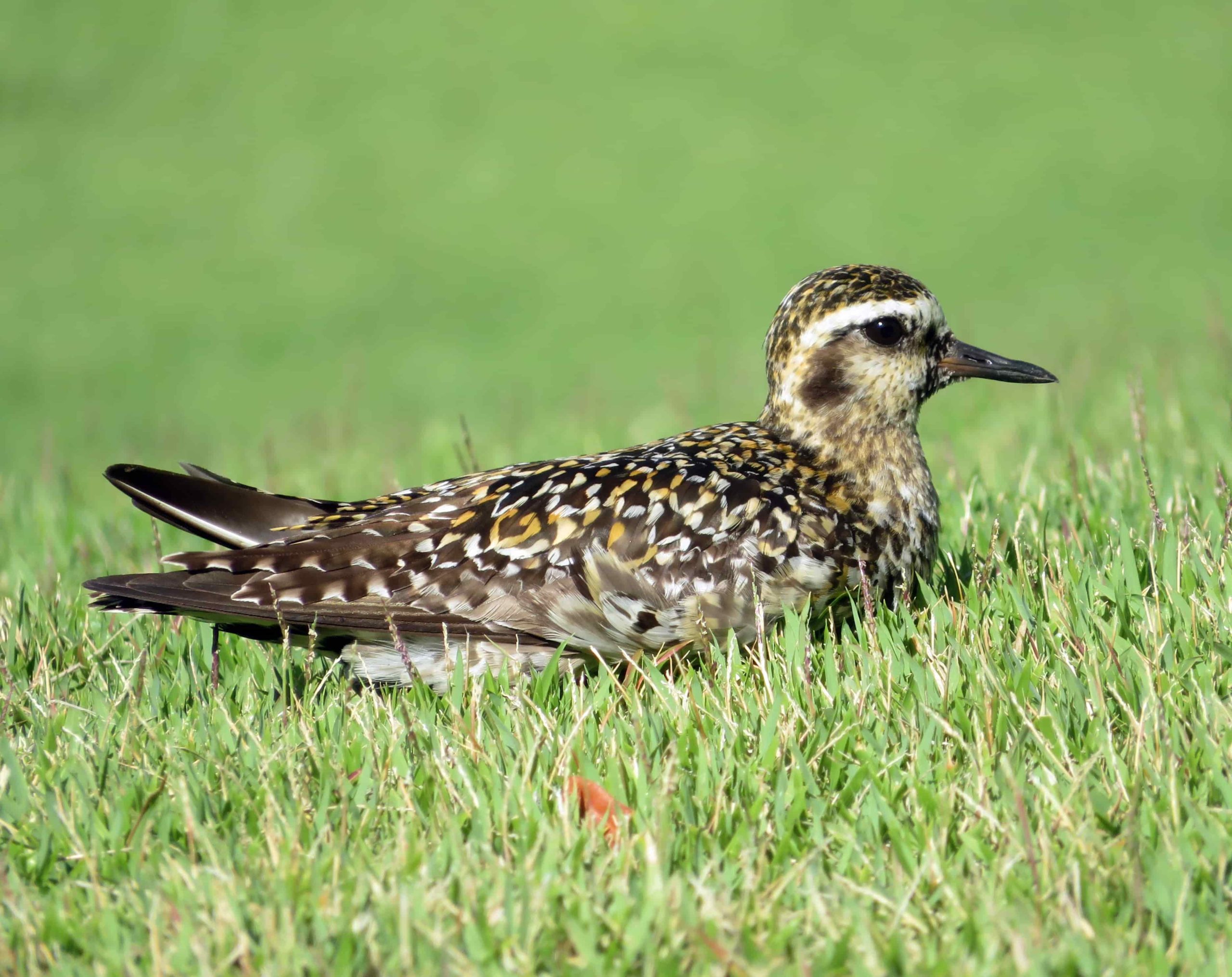Celebrating Hawaiʻi’s Kōlea
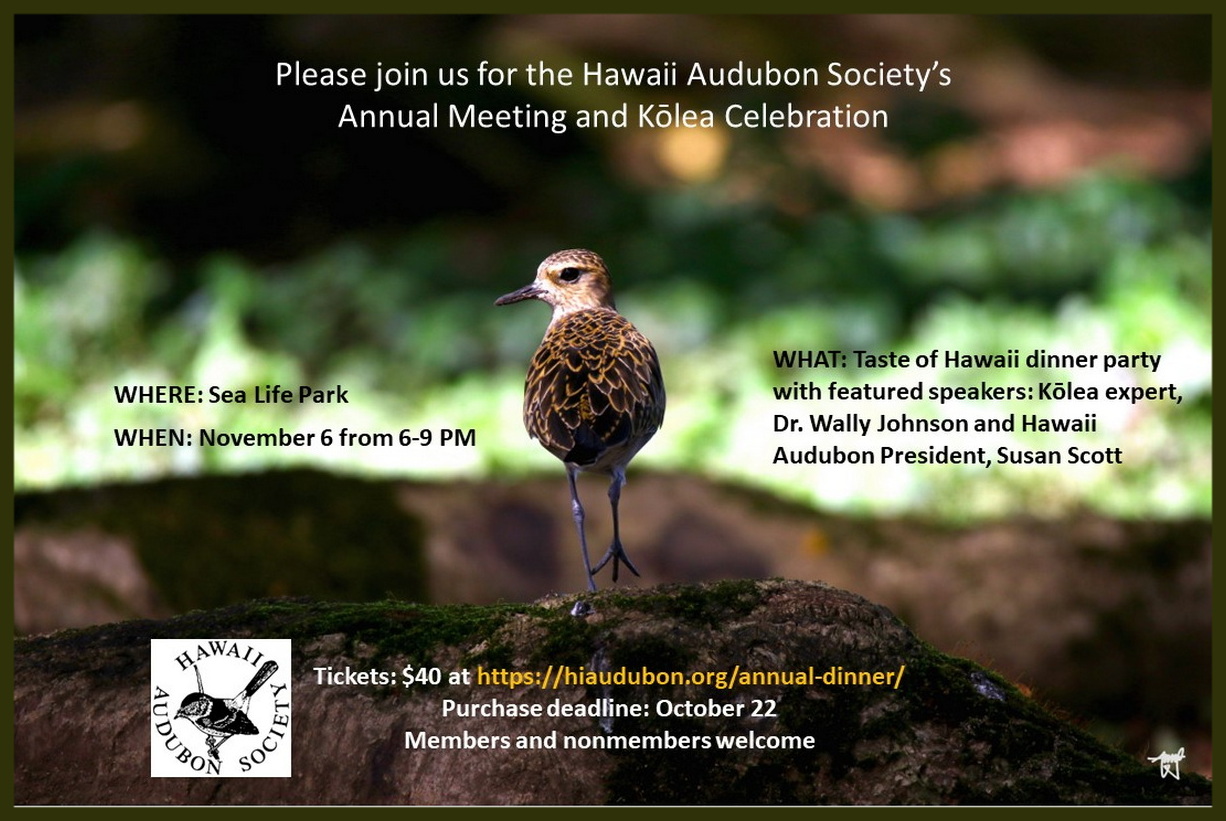 Special thanks to Ann Tanimoto-Johnson of UH Hilo’s LOHE Bioacoustics Lab for this outstanding Kōlea photo.
Special thanks to Ann Tanimoto-Johnson of UH Hilo’s LOHE Bioacoustics Lab for this outstanding Kōlea photo.
As of October, most of our adult kōlea have returned to Hawaiʻi for the winter. Now is the time to keep an eye out for their summer’s offspring, which can arrive as late as November depending on Alaska weather. Because of these late arrivals, we start the annual Kōlea Count on December 1st. Please tell me on the contact tab which site you can count, and I’ll sign you up. We ask for a minimum of 3 counts on your chosen site between December 1st and March 31st. (Suggested count sites)
Wally Johnson is also migrating to Hawai’i again to continue his Pacific Golden-Plover research. Please join us to see Wally’s excellent photos and hear the latest about these marvelous shorebirds that brighten our lives with their presence.
Becoming a member of the Hawaii Audubon Society helps us help Wally learn more about the birds, and in that, we help them thrive.
Hope to see you at Sea Life Park for this special plover party. Buy tickets here. (Deadline October 22nd.)
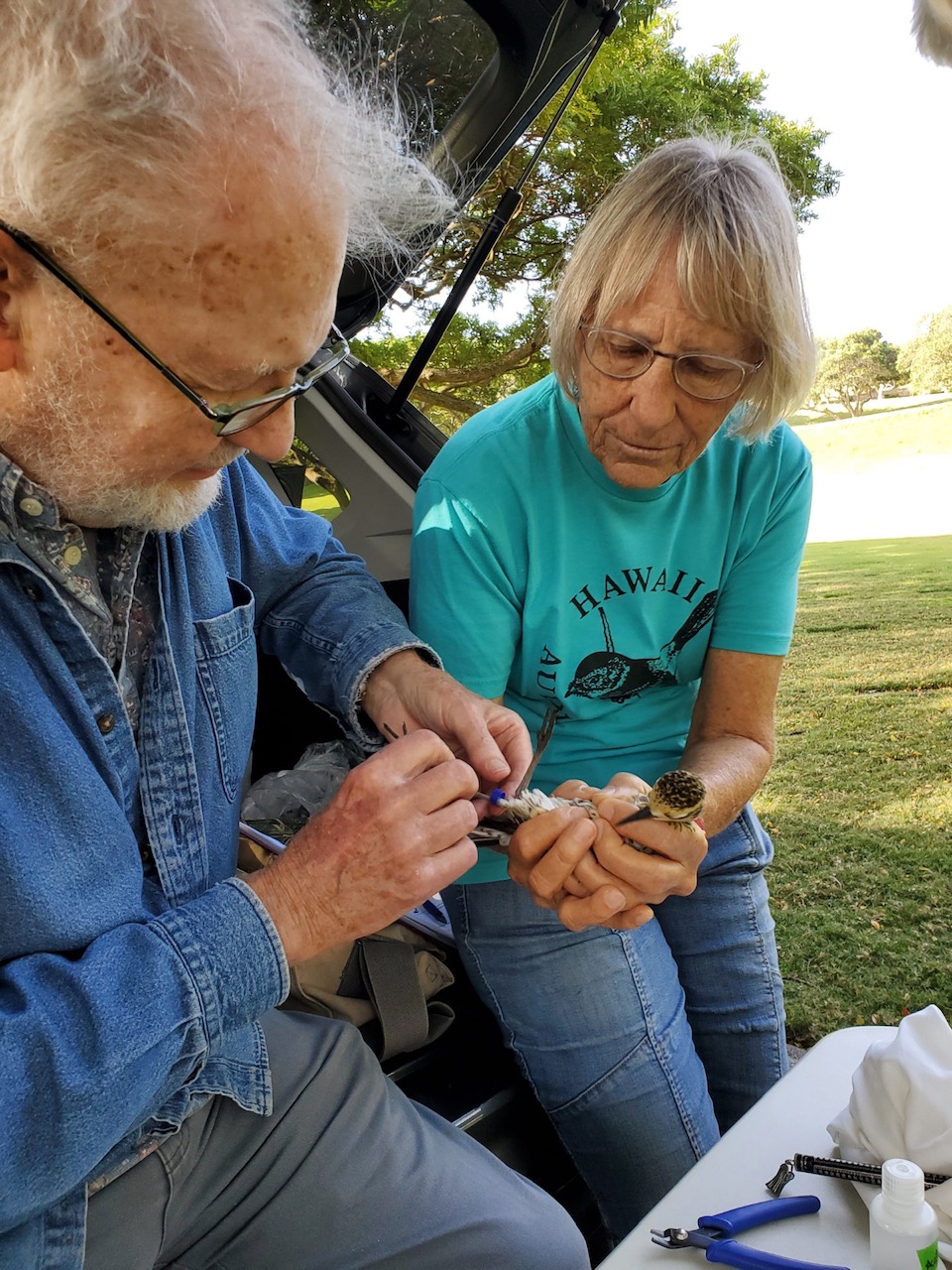 Wally and me (Susan) giving a Kōlea ID leg bands at Punchbowl Cemetery, March, 2022.
Wally and me (Susan) giving a Kōlea ID leg bands at Punchbowl Cemetery, March, 2022.
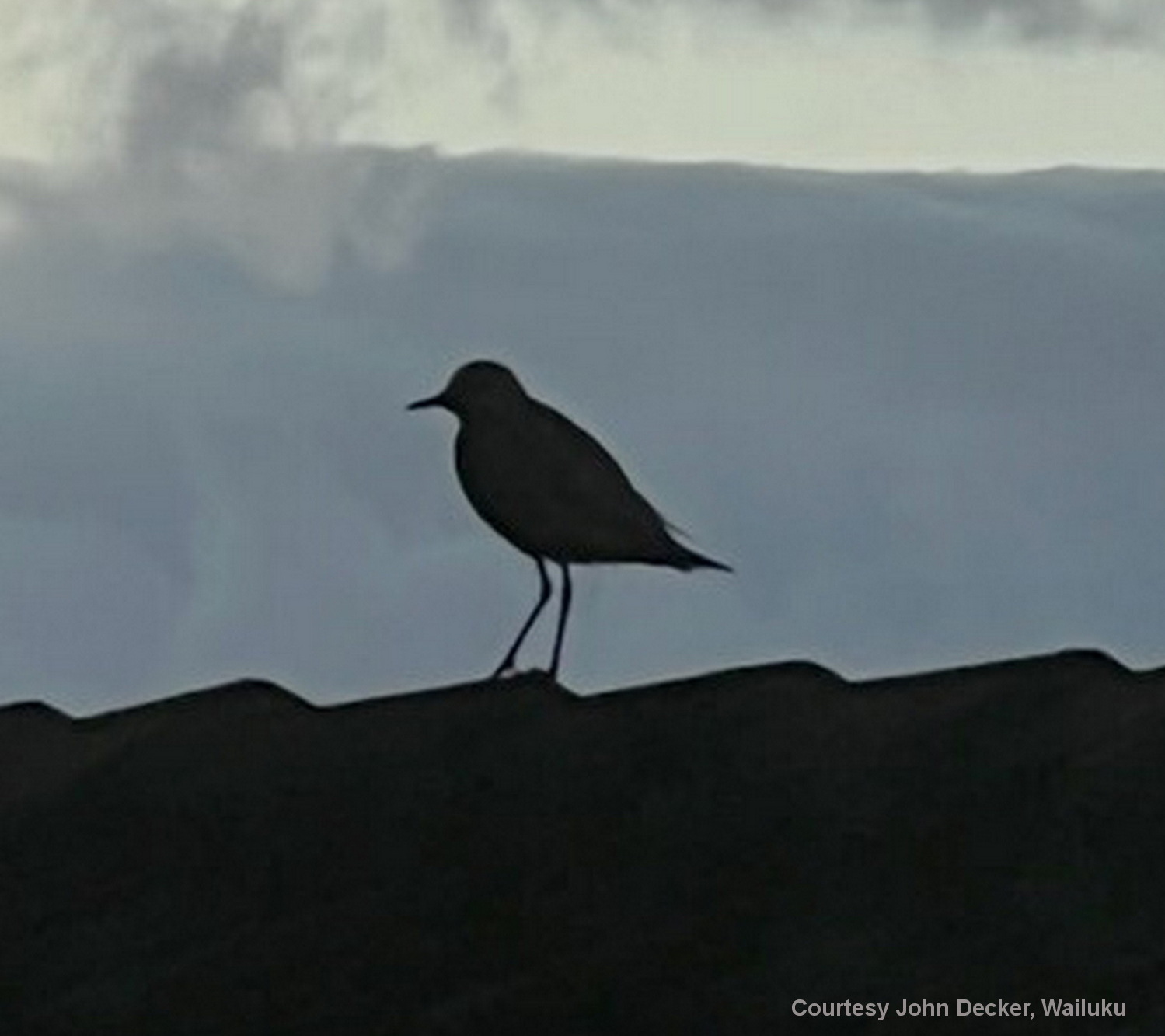
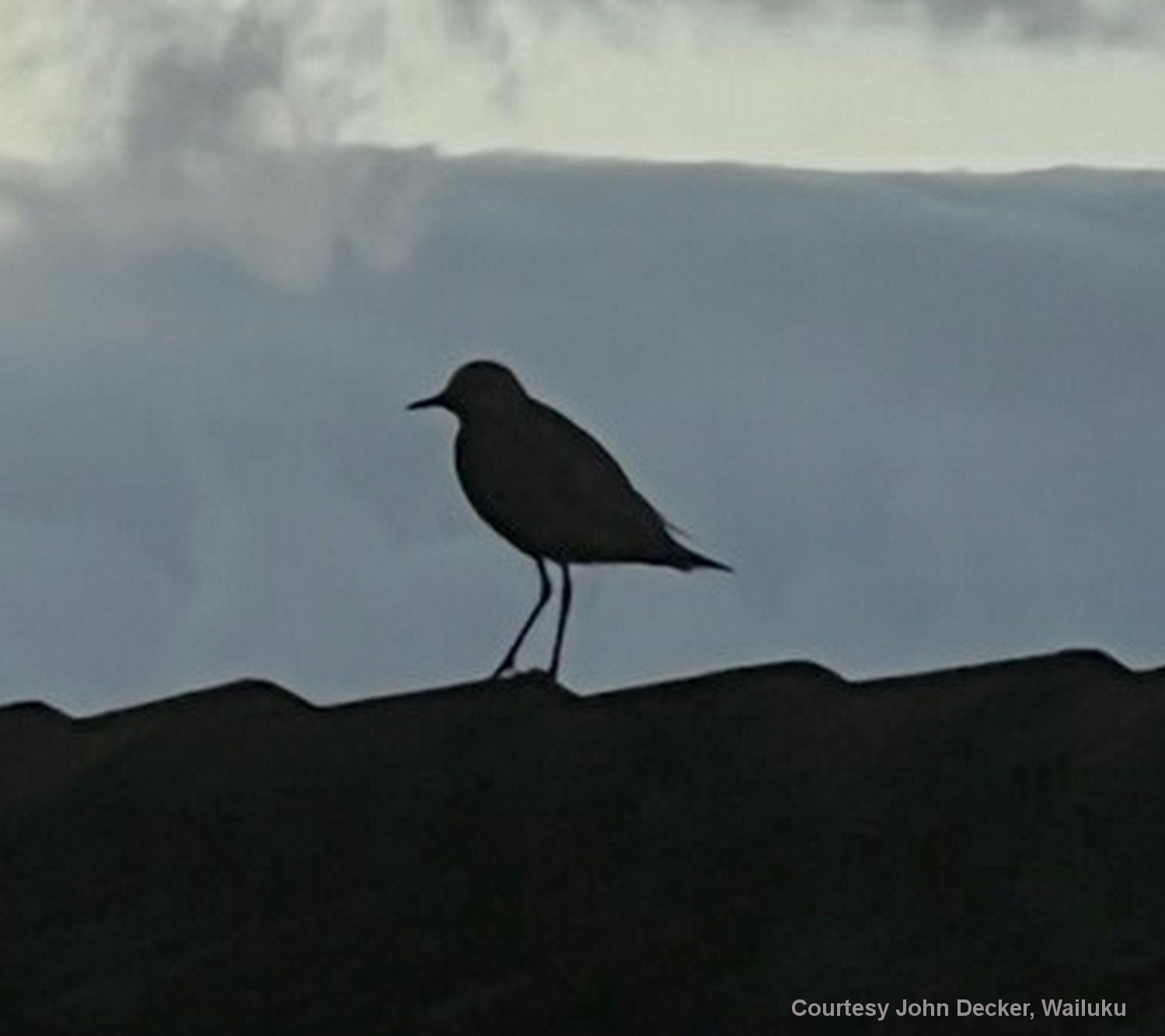
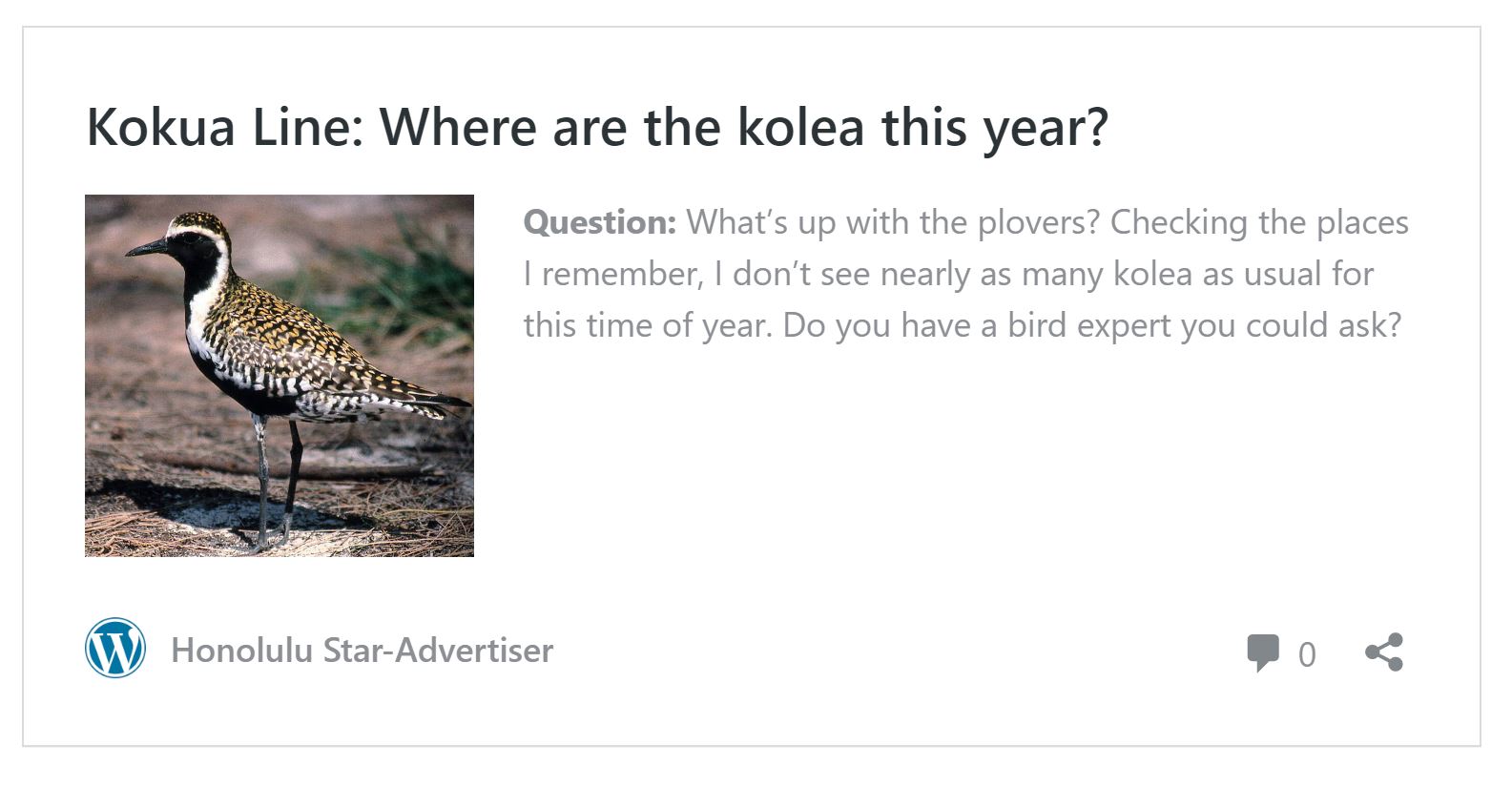 The above clip is from the September 3rd, 2022 Kokua Line. My answers are available only to Star-Advertiser subscribers, but the facts I gave Christine are below, as well as on this website. On September 9th, I also chatted about kōlea with Catherine Cruz, host of Hawaii Public Radio’s “The Conversation.”
The above clip is from the September 3rd, 2022 Kokua Line. My answers are available only to Star-Advertiser subscribers, but the facts I gave Christine are below, as well as on this website. On September 9th, I also chatted about kōlea with Catherine Cruz, host of Hawaii Public Radio’s “The Conversation.” 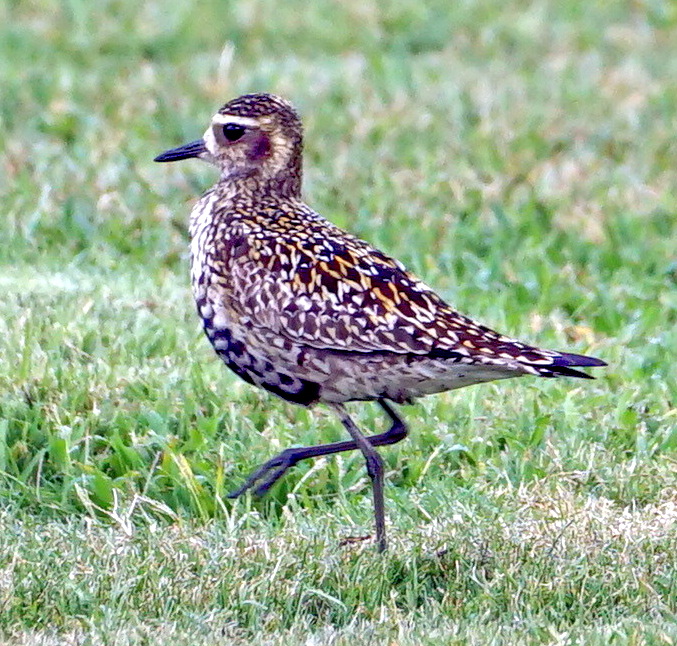 Between 70 and 80 kōlea spend winters in Punchbowl Cemetery. This is the first to arrive back in its Punchbowl patch, spotted by the Hawaii Audubon Society’s office and communications manager, Laura Zoller on August 7, 2022. ©Laura Zoller
Between 70 and 80 kōlea spend winters in Punchbowl Cemetery. This is the first to arrive back in its Punchbowl patch, spotted by the Hawaii Audubon Society’s office and communications manager, Laura Zoller on August 7, 2022. ©Laura Zoller 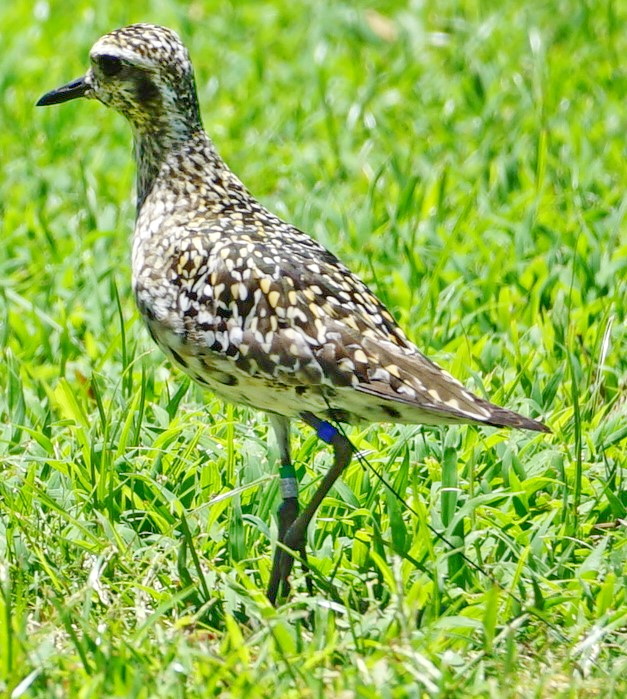 This bird posed perfectly for a picture of its leg bands. The plover returned to Punchbowl on August 22nd, and appeared to be good health after flying 6,000 round-trip miles carrying a tiny satellite tag. (antenna below tail.) © Susanne Spiessberger
This bird posed perfectly for a picture of its leg bands. The plover returned to Punchbowl on August 22nd, and appeared to be good health after flying 6,000 round-trip miles carrying a tiny satellite tag. (antenna below tail.) © Susanne Spiessberger 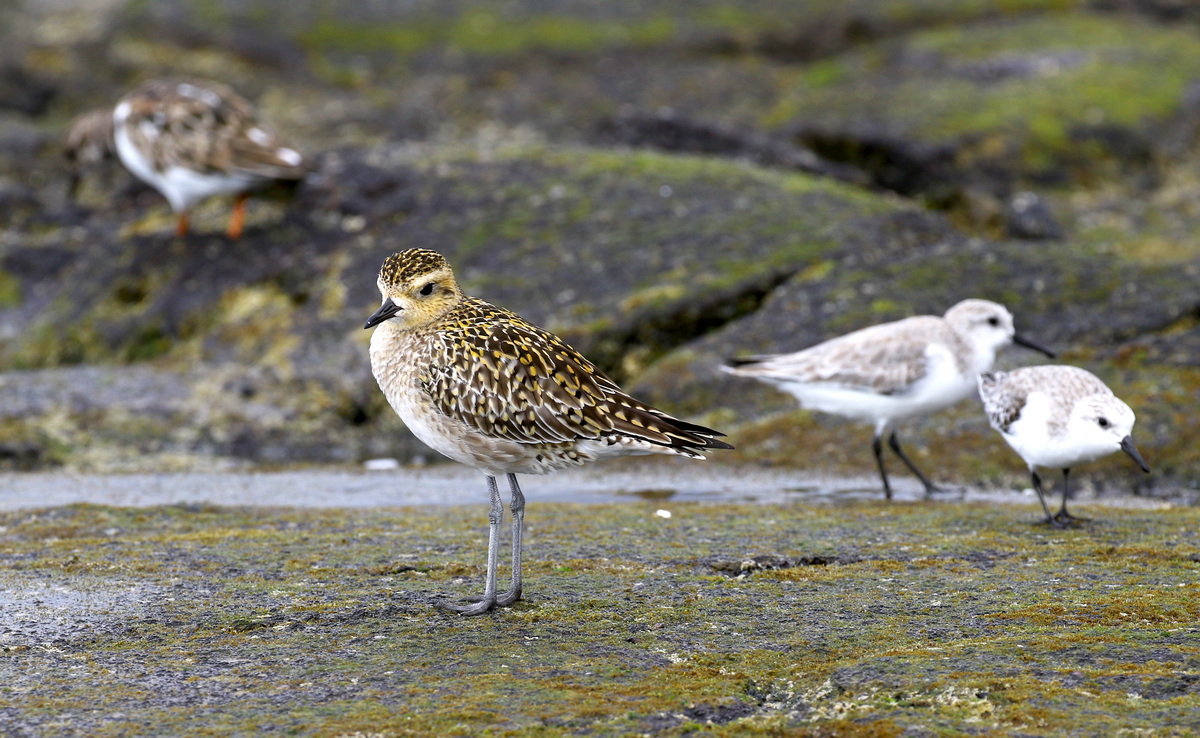
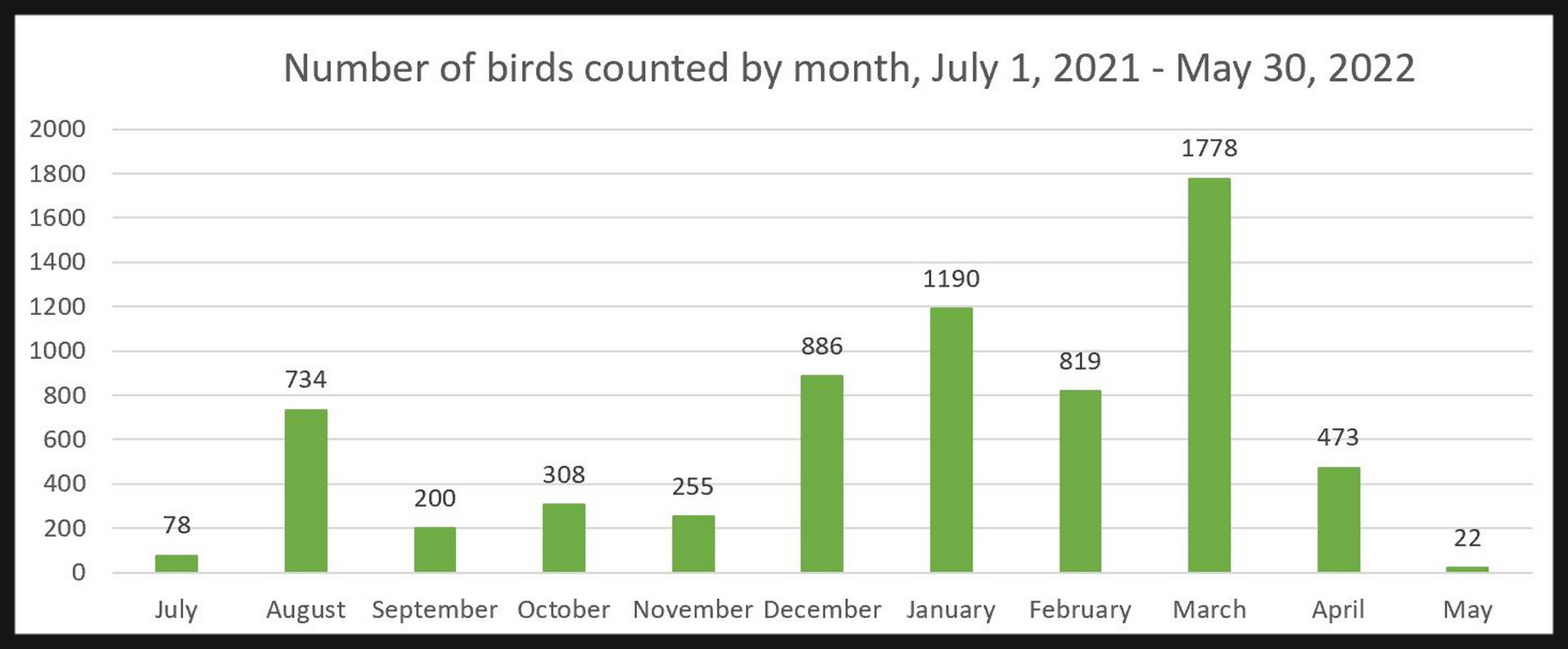
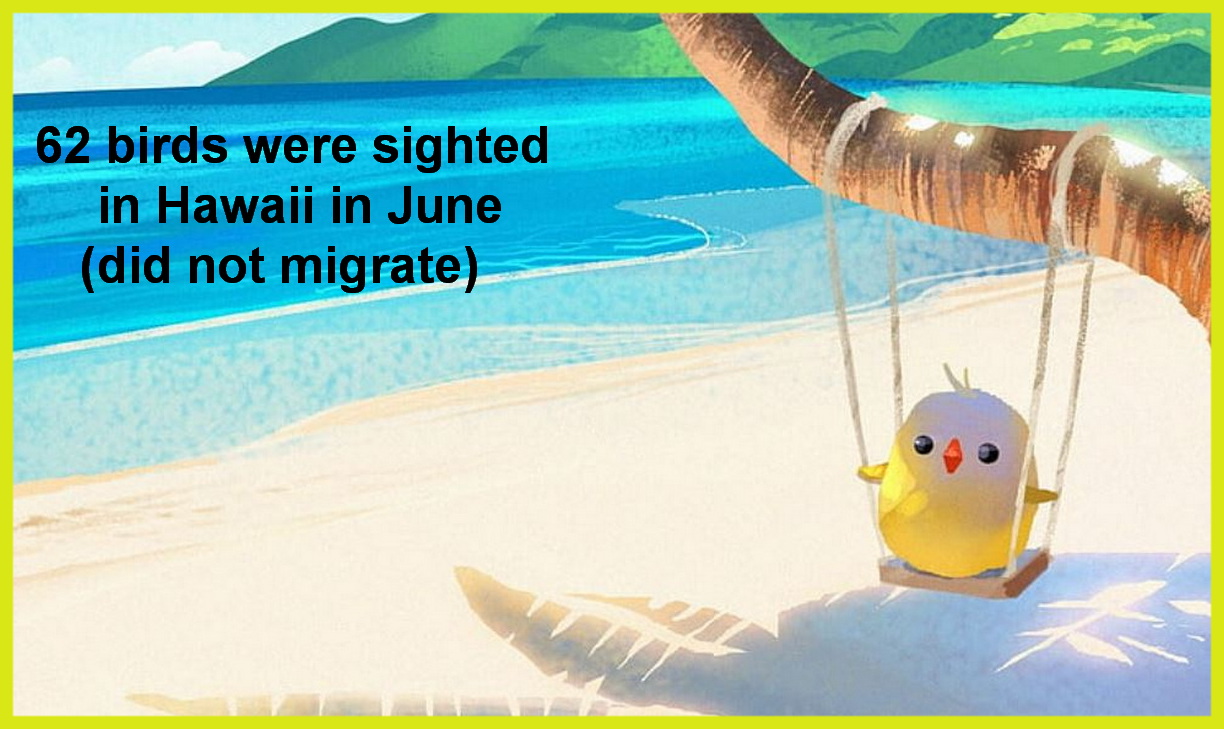

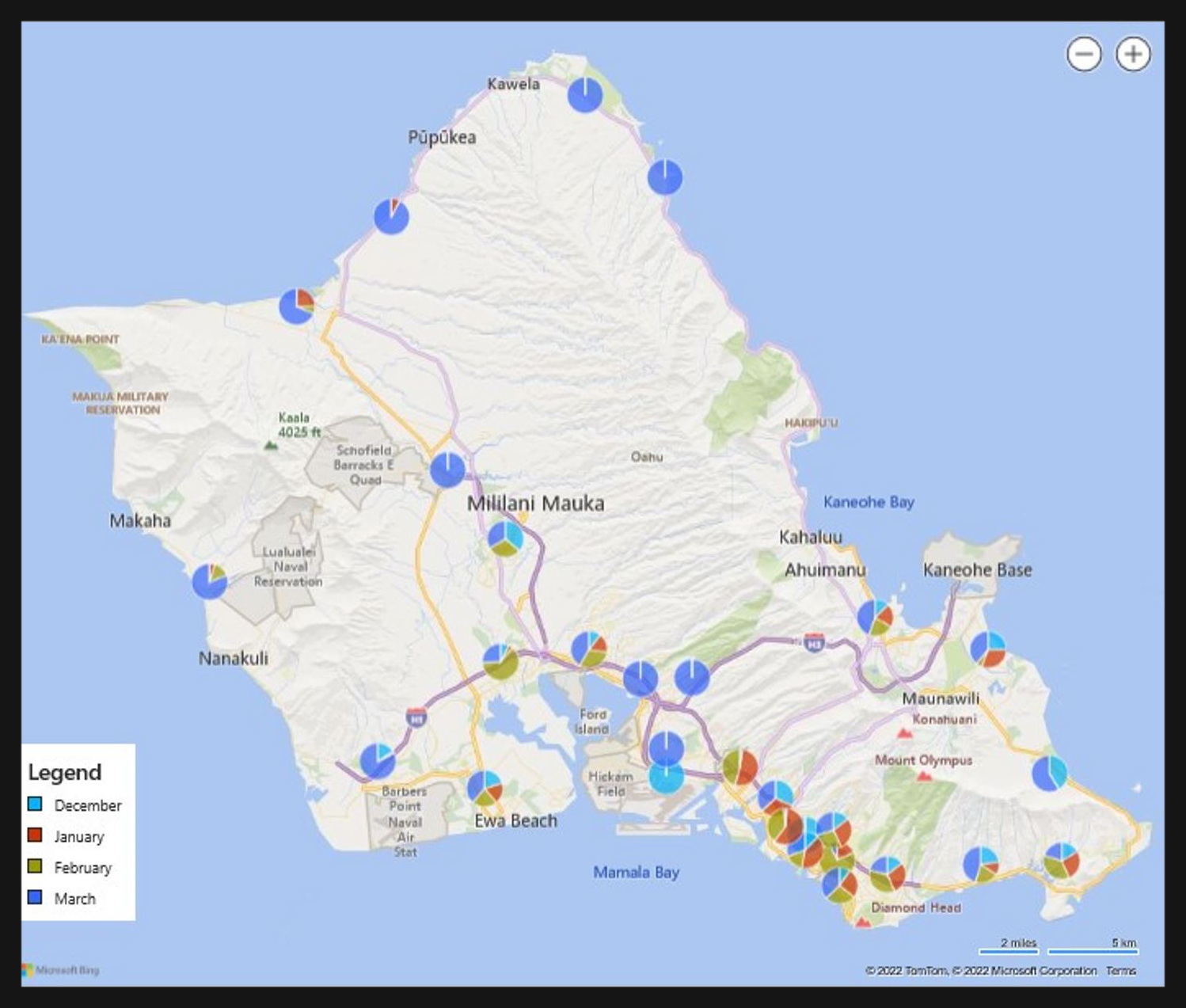
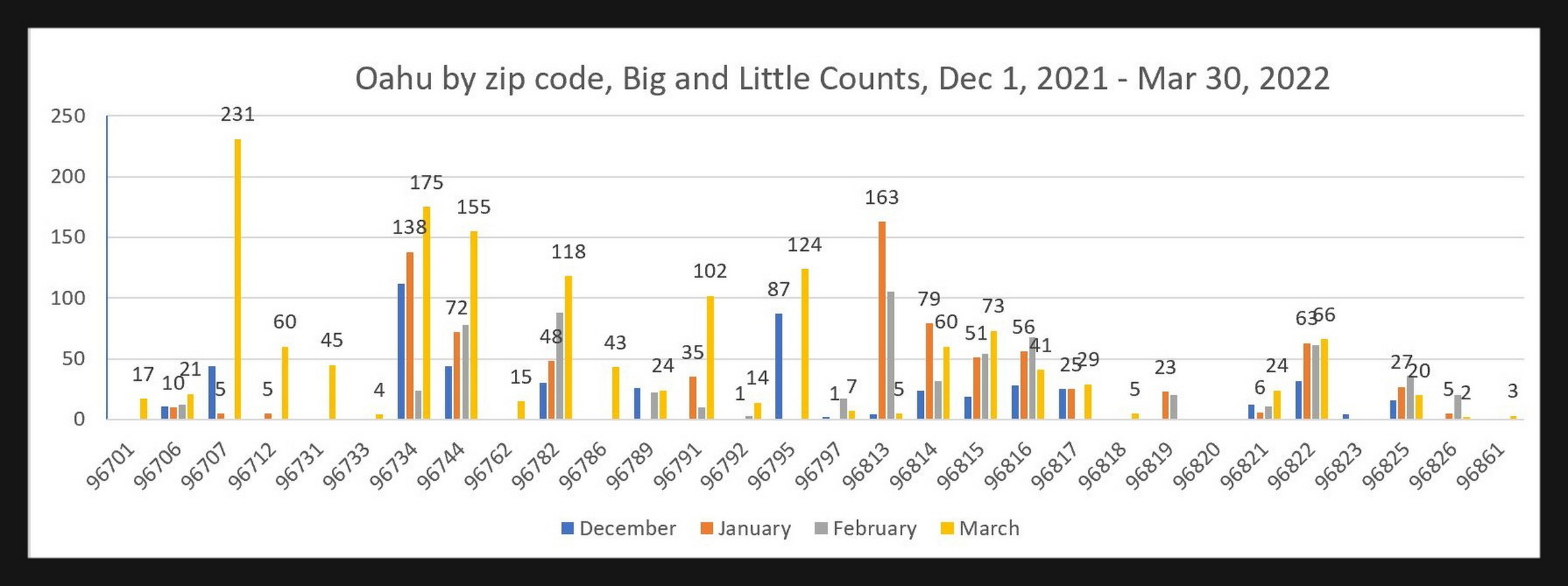
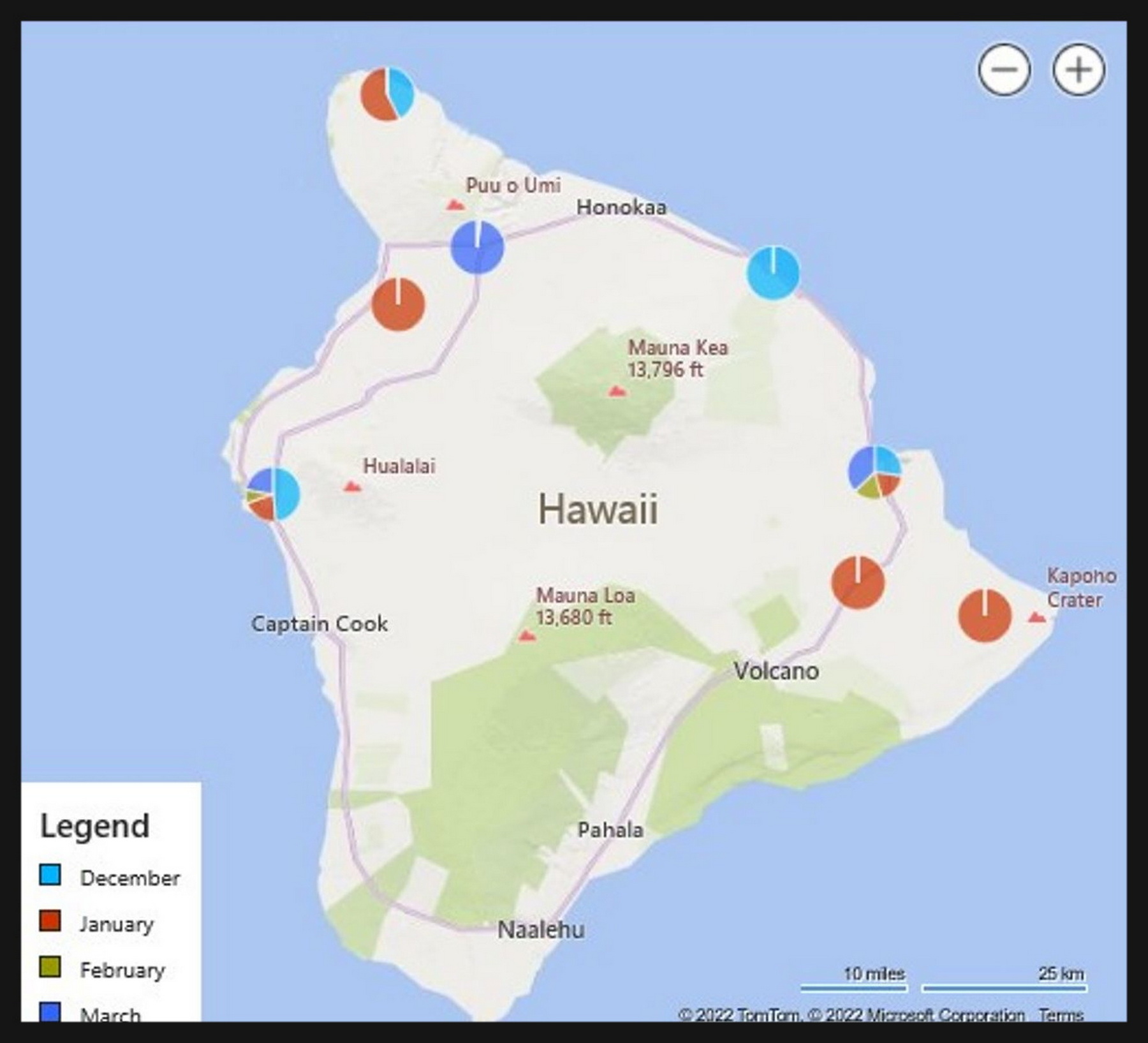
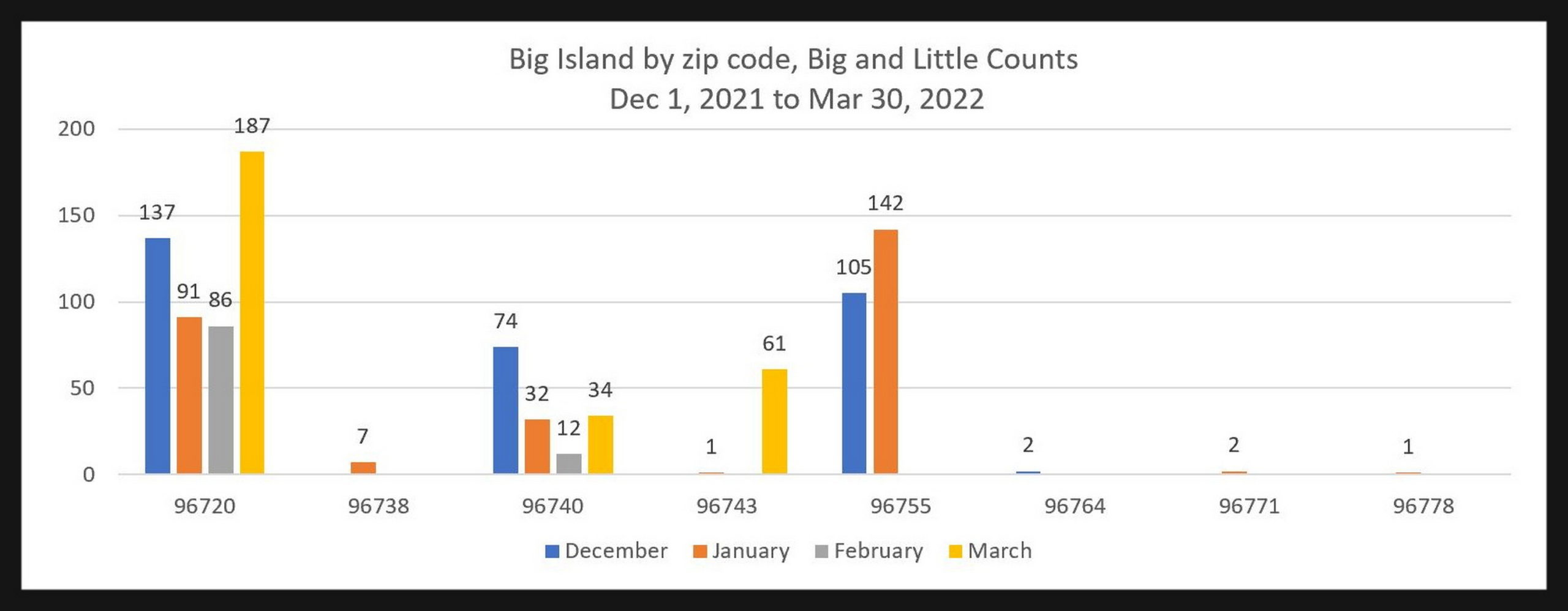
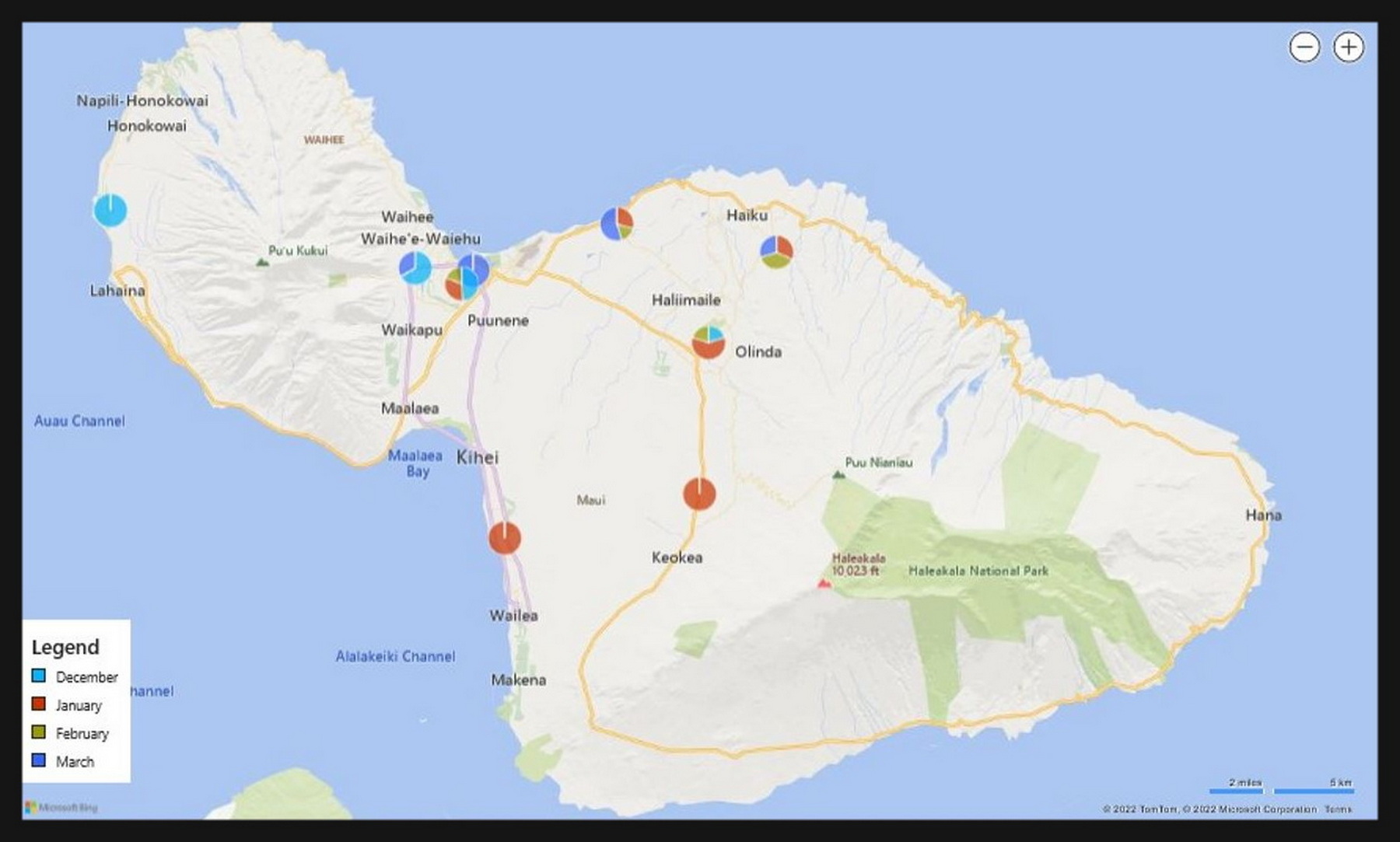
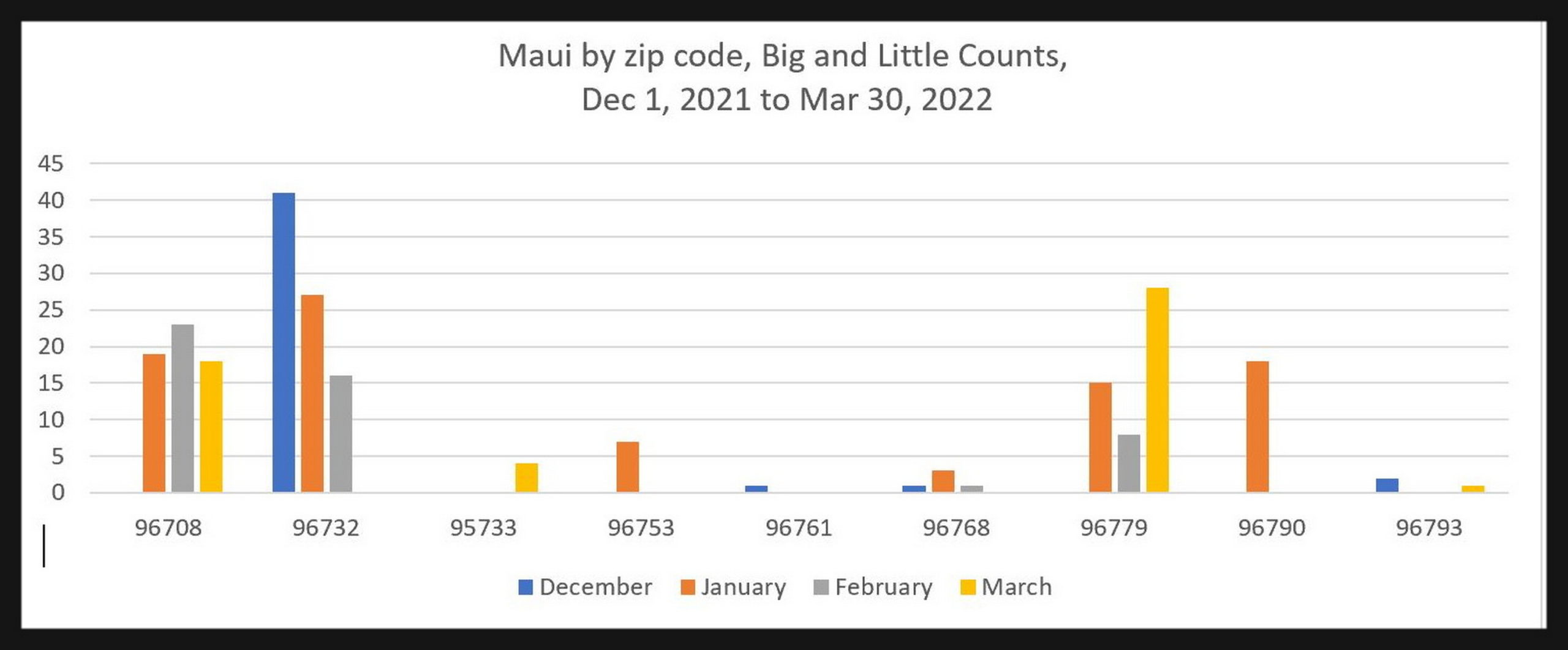
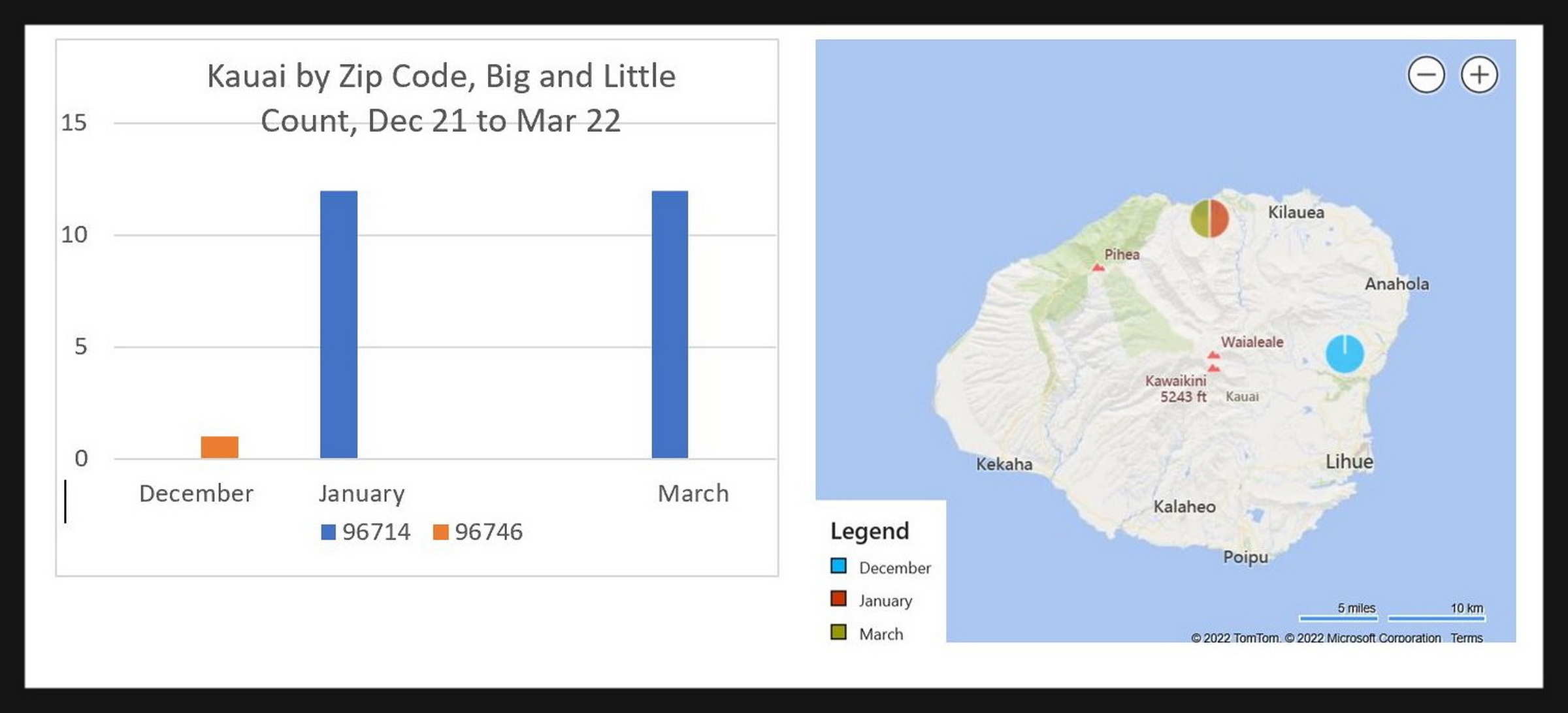
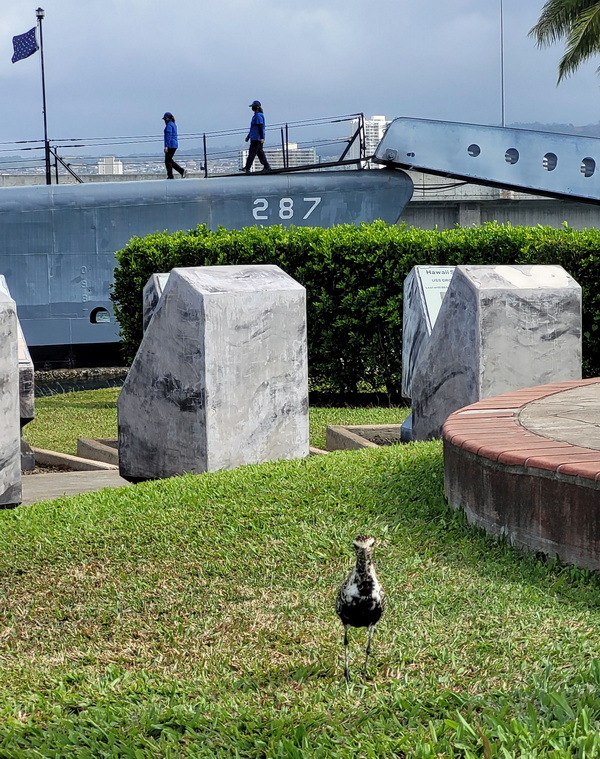
 Our Jake on April 1st. ©Susan Scott
Our Jake on April 1st. ©Susan Scott  During my visit to the Ford Island field, Roger and I counted about 50 birds in the field. Because they tended to line up lengthwise, less than half are visible in this picture. ©Susan Scott
During my visit to the Ford Island field, Roger and I counted about 50 birds in the field. Because they tended to line up lengthwise, less than half are visible in this picture. ©Susan Scott 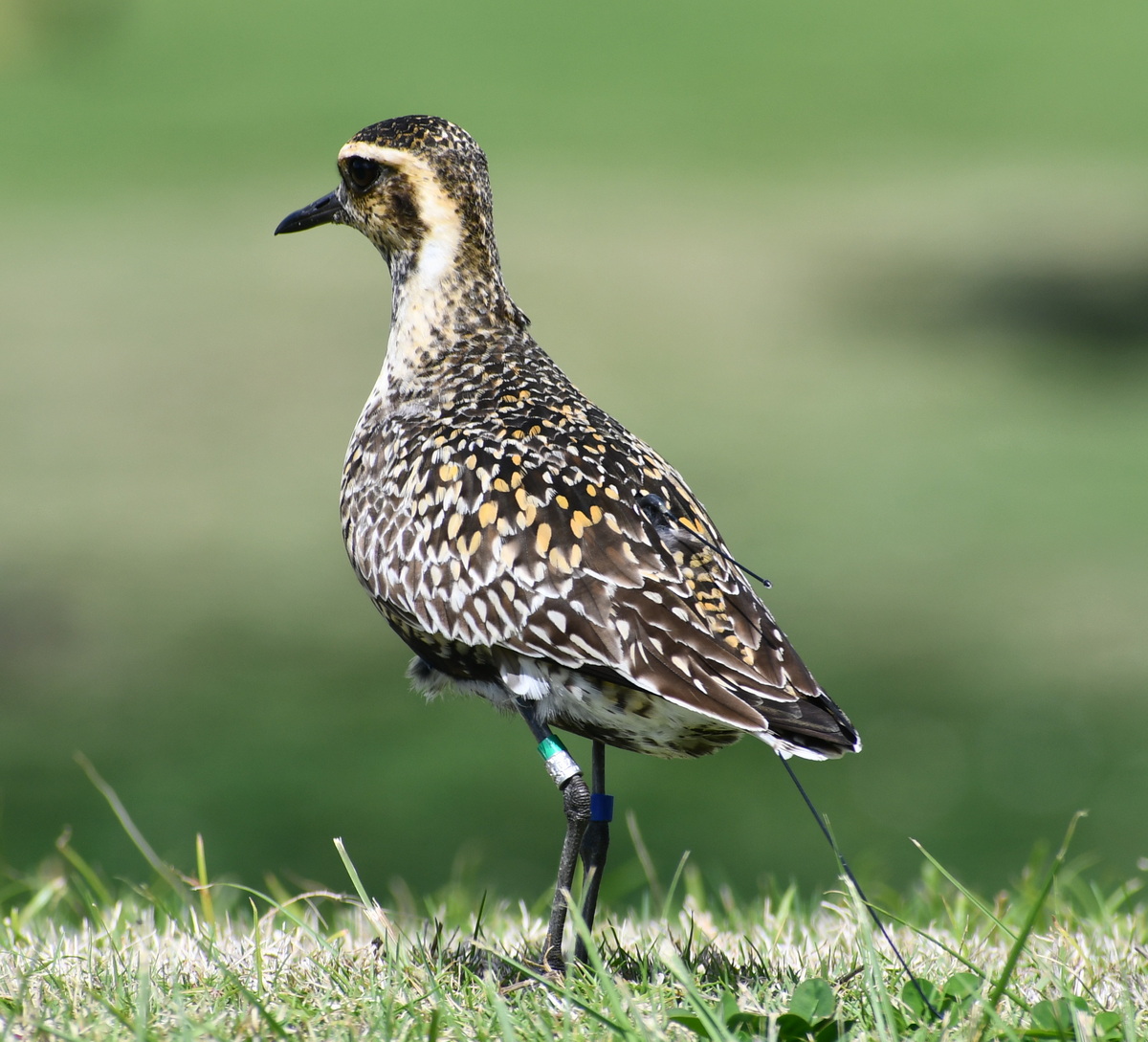 Punchbowl study female, April 20, 2022.©Susan Scott
Punchbowl study female, April 20, 2022.©Susan Scott 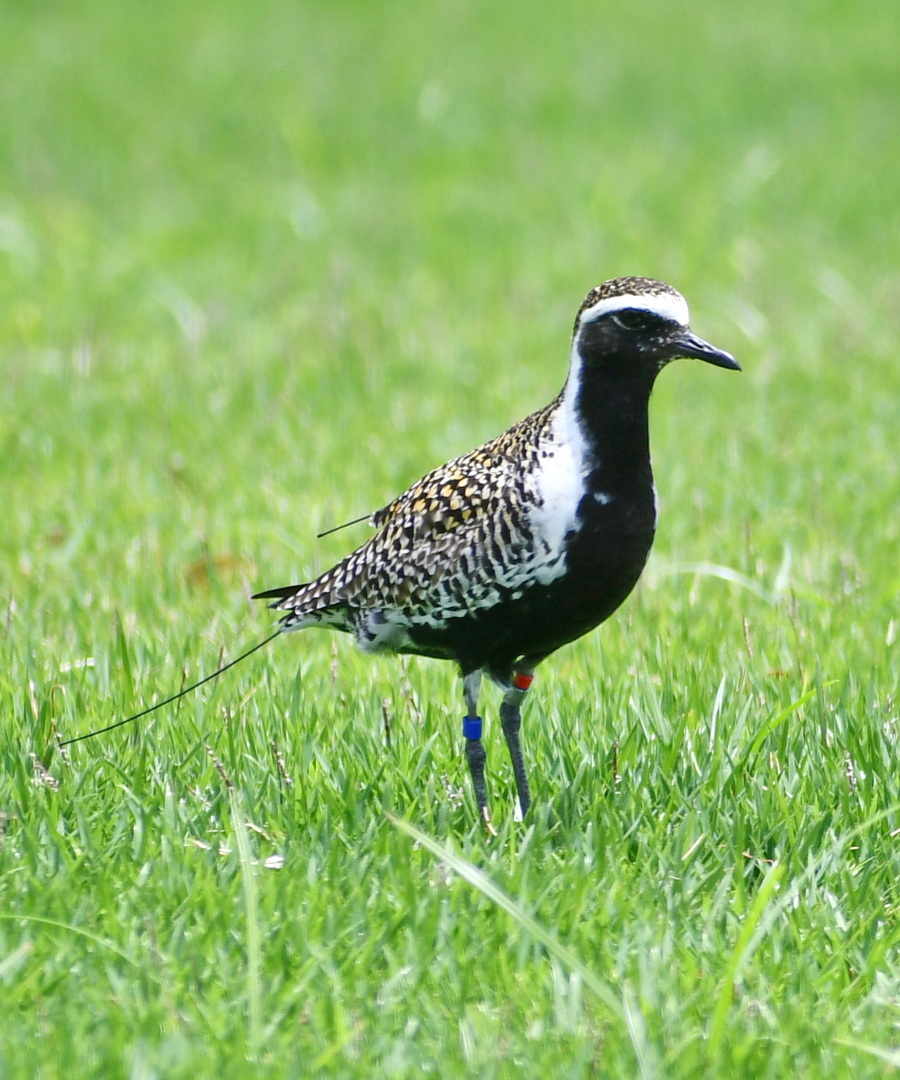 Another Punchbowl study male, April 26, 2022 ©Susan Scott
Another Punchbowl study male, April 26, 2022 ©Susan Scott 
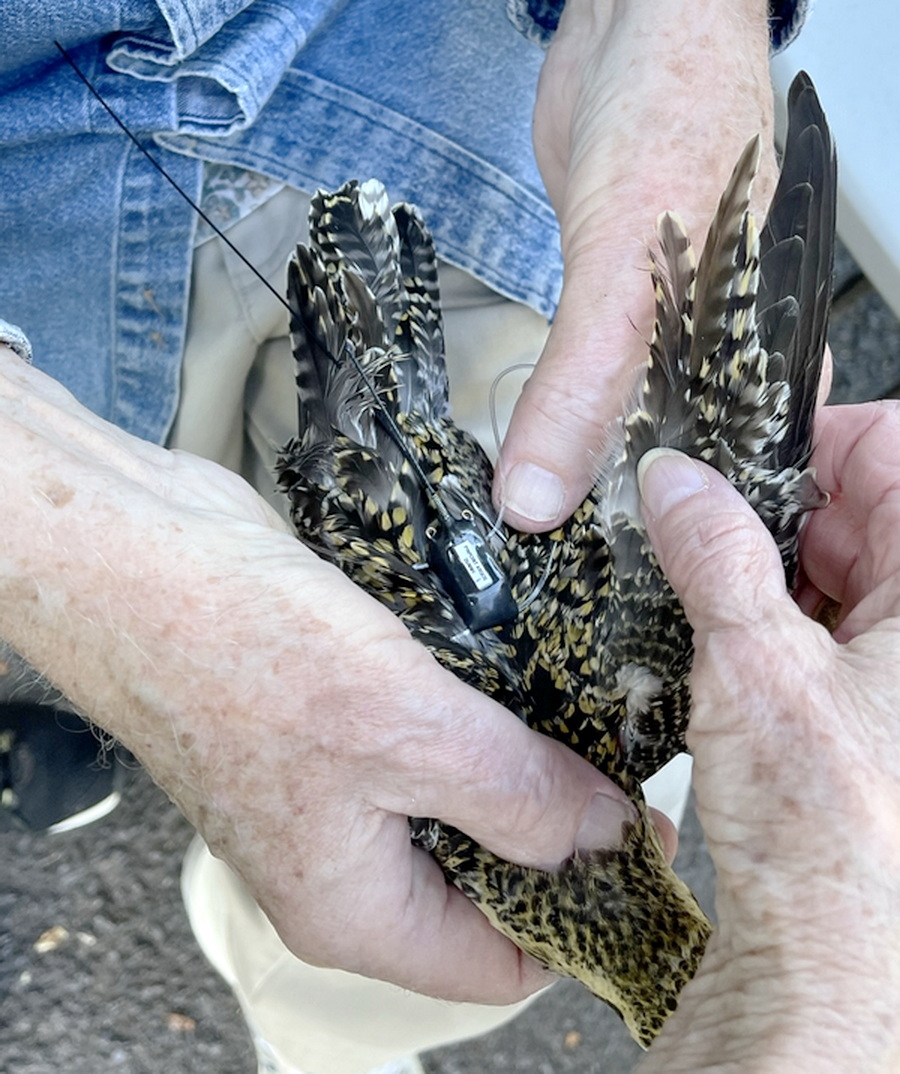 The plover carries its lightweight satellite tag on its back with soft, stretchable straps around the upper part of each leg. This allows the birds to walk and fly unhindered. ©Susan Scott
The plover carries its lightweight satellite tag on its back with soft, stretchable straps around the upper part of each leg. This allows the birds to walk and fly unhindered. ©Susan Scott 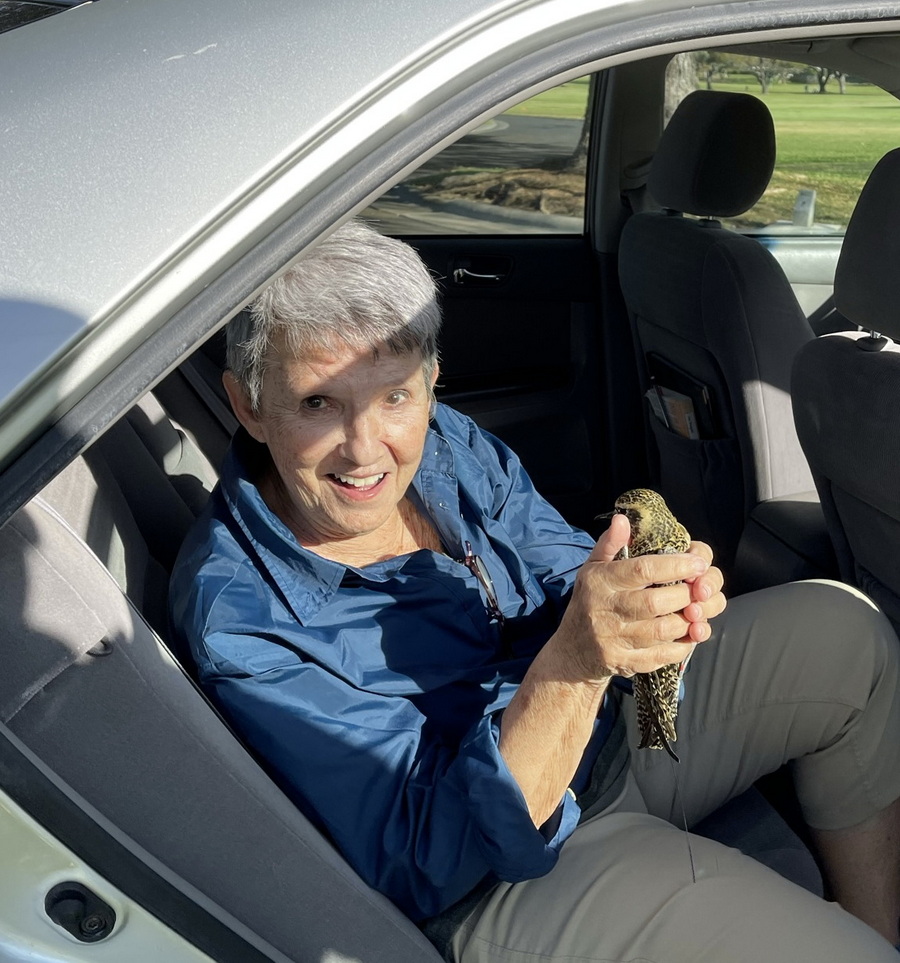 Volunteer, Marcy Katz, enjoys holding a satellite-tagged bird (antenna below its tail) before releasing it. Because Pacific Golden-Plovers defend their foraging areas, Wally makes sure each bird is returned to its home patch to avoid squabbles. ©Susan Scott
Volunteer, Marcy Katz, enjoys holding a satellite-tagged bird (antenna below its tail) before releasing it. Because Pacific Golden-Plovers defend their foraging areas, Wally makes sure each bird is returned to its home patch to avoid squabbles. ©Susan Scott 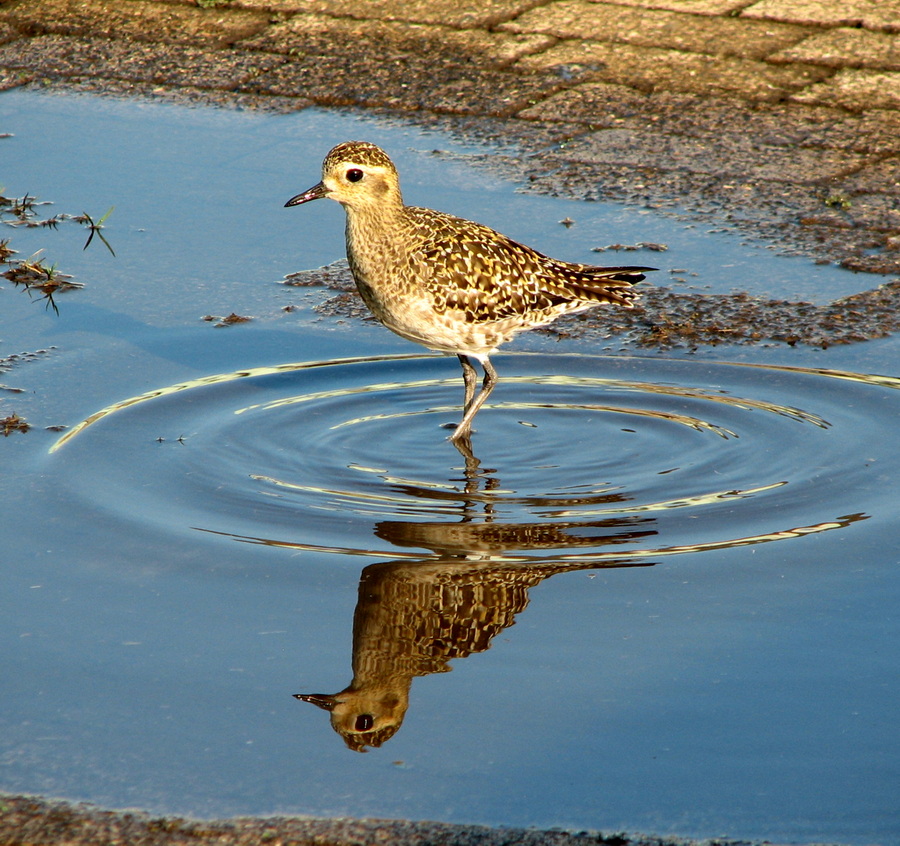
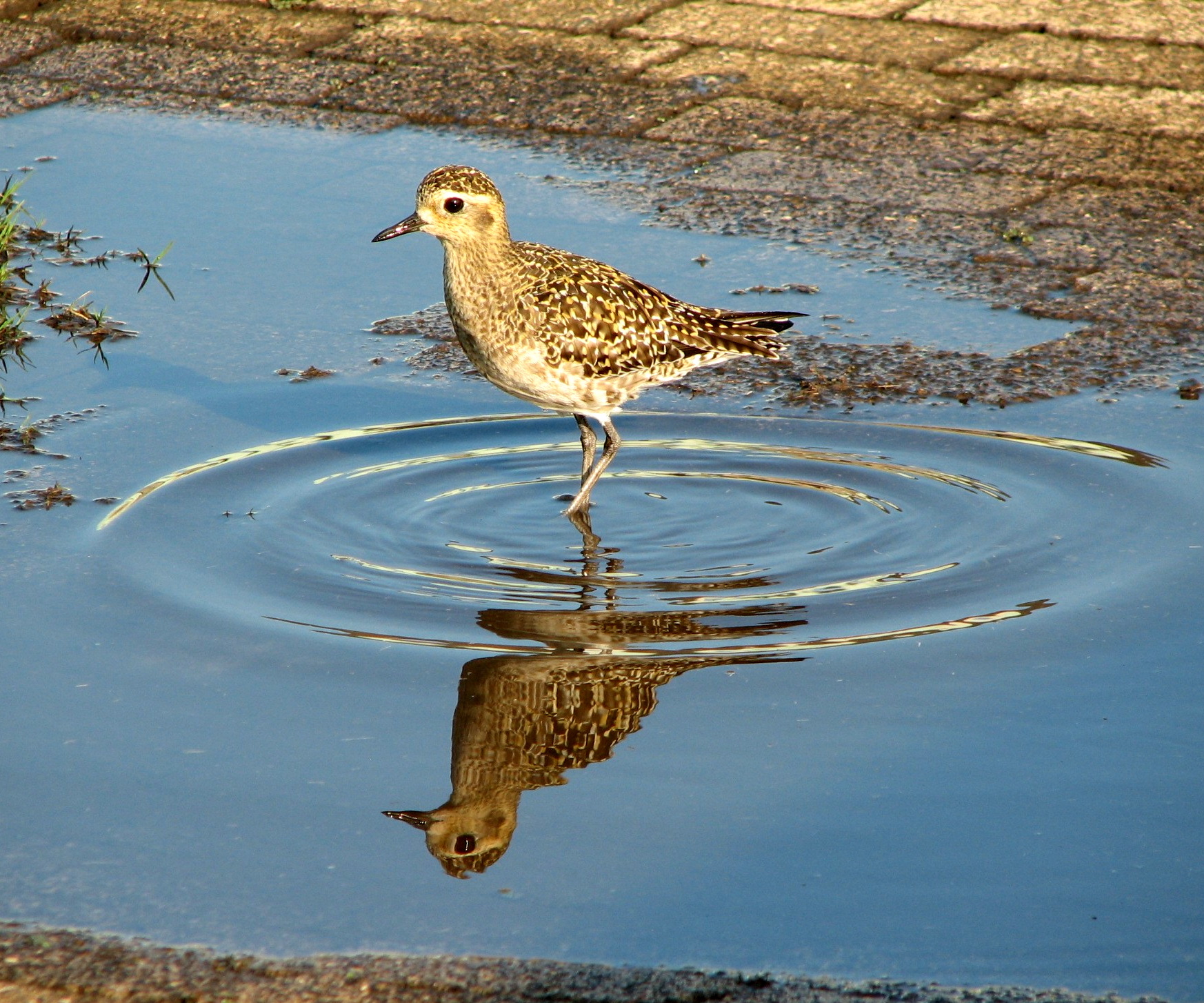 This Maui Kolea enjoyed bathing in a driveway rain puddle. © Photo courtesy Calvin M. Kaya, Ph.D., Professor Emeritus of Biology, Montana State University
This Maui Kolea enjoyed bathing in a driveway rain puddle. © Photo courtesy Calvin M. Kaya, Ph.D., Professor Emeritus of Biology, Montana State University 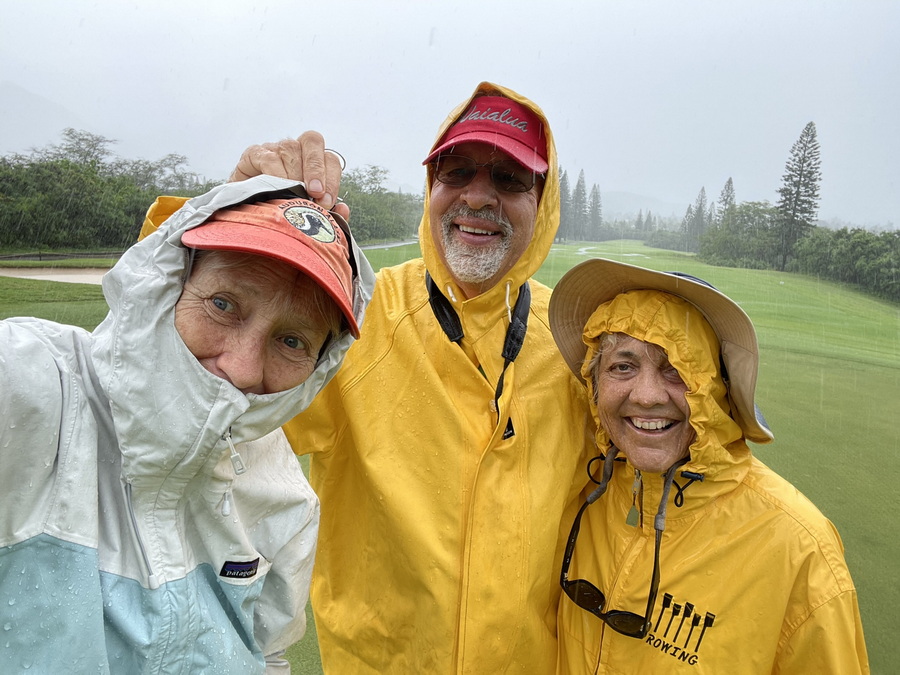 Craig is showing off the Pacific Golden-Plover patch on my Alaska Audubon hat, a special gift. Friend and neighbor Lani Twomey braved the storm to count Kolea with us. (Selfie)
Craig is showing off the Pacific Golden-Plover patch on my Alaska Audubon hat, a special gift. Friend and neighbor Lani Twomey braved the storm to count Kolea with us. (Selfie) 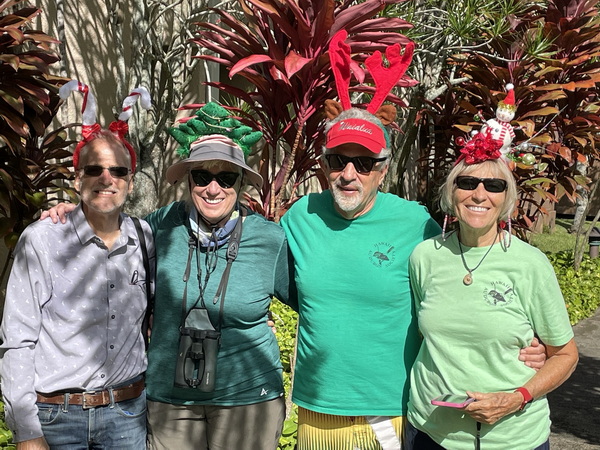 The Christmas Day Kolea team from right, David Johnson. Beth Flint, Craig Thomas and me, Susan Scott. Photo by Michelle Hester
The Christmas Day Kolea team from right, David Johnson. Beth Flint, Craig Thomas and me, Susan Scott. Photo by Michelle Hester 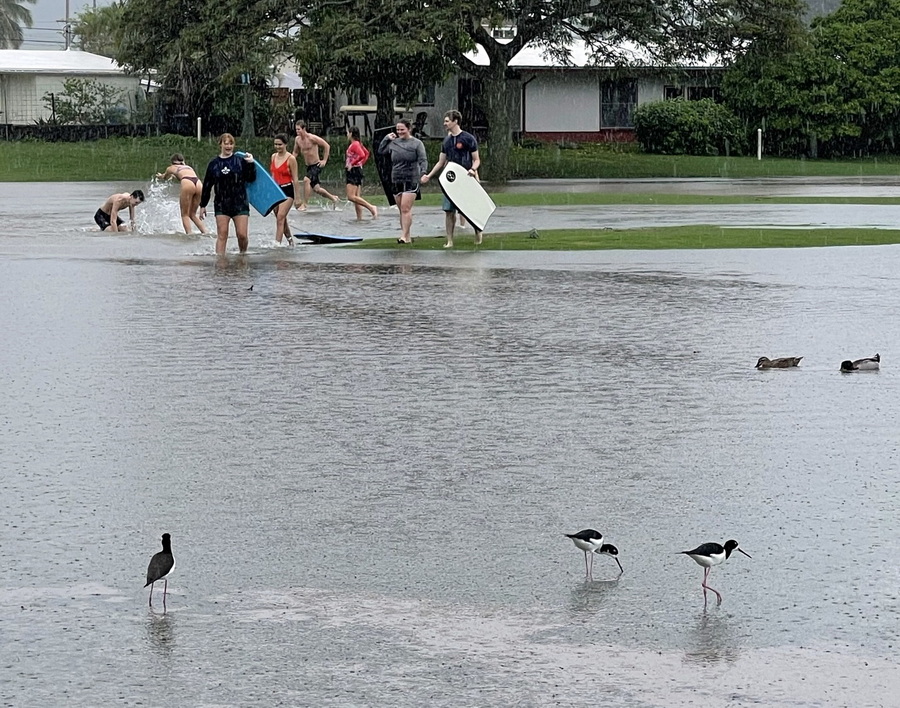 During the storm, stilts, ducks and people enjoyed the temporary lake on this fairway. © Susan Scott
During the storm, stilts, ducks and people enjoyed the temporary lake on this fairway. © Susan Scott 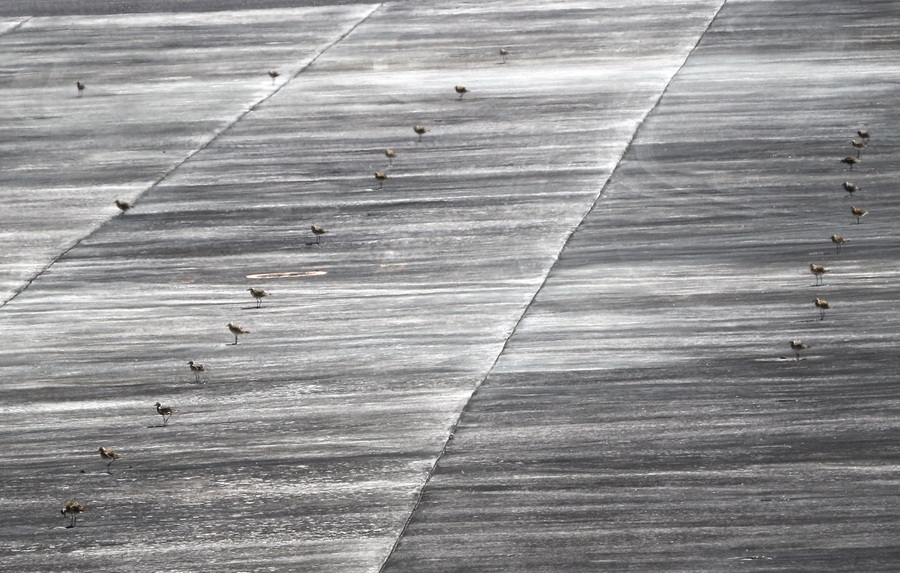 For reasons known only to the Kolea, the birds sometimes line up on the runway at Midway Atoll. © Courtesy Jonathan Plissner, USFWS
For reasons known only to the Kolea, the birds sometimes line up on the runway at Midway Atoll. © Courtesy Jonathan Plissner, USFWS 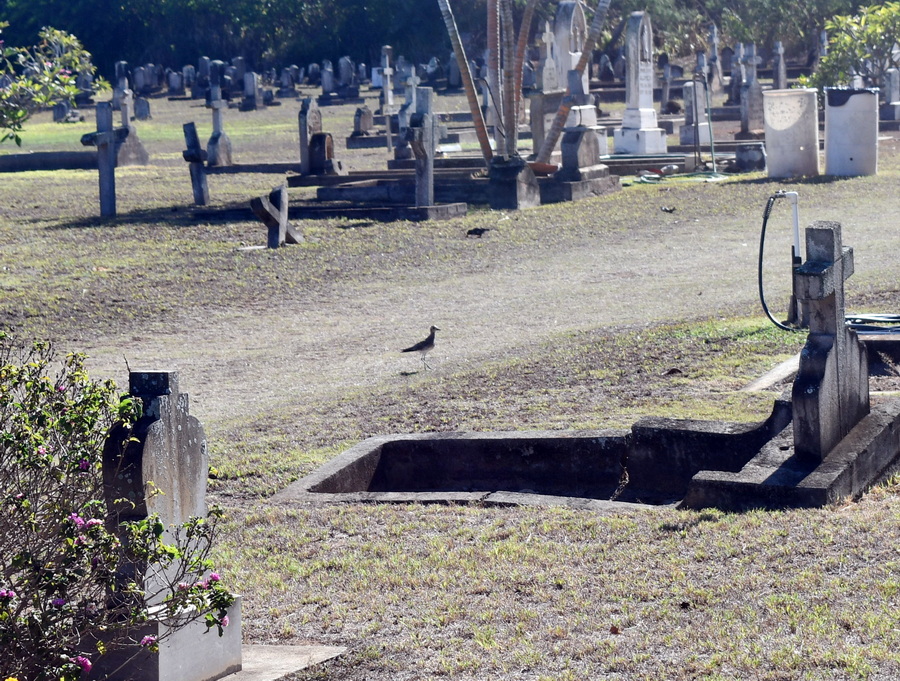
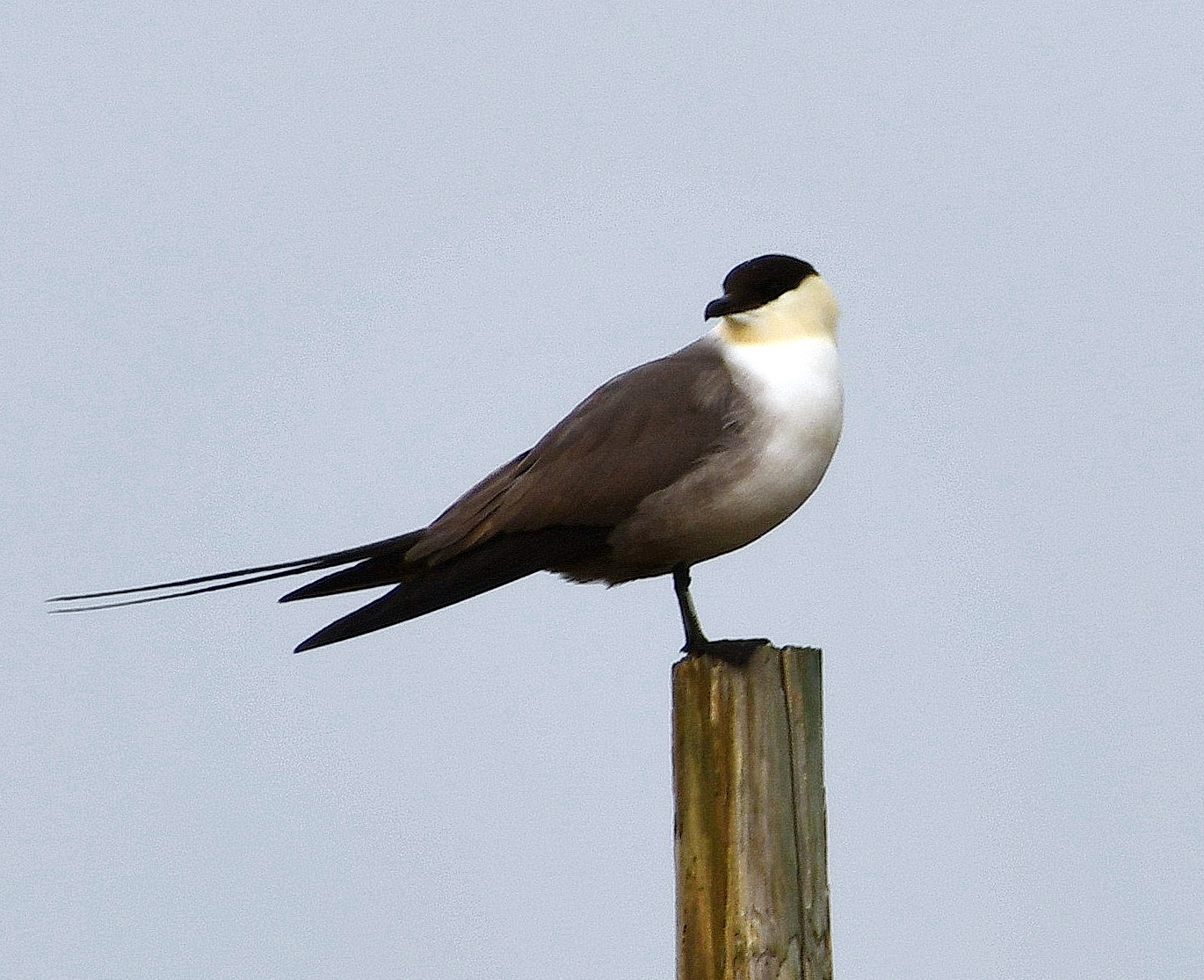 This Jaeger (pronounced YAY-gur, German for hunt) is a fast-flying gull relative that, like Kolea, nests on the ground in the Arctic tundra. Jaegers are predators that eat other birds and their eggs. This post on the tundra outside Nome was a good perch for scouting prey. ©Susan Scott
This Jaeger (pronounced YAY-gur, German for hunt) is a fast-flying gull relative that, like Kolea, nests on the ground in the Arctic tundra. Jaegers are predators that eat other birds and their eggs. This post on the tundra outside Nome was a good perch for scouting prey. ©Susan Scott 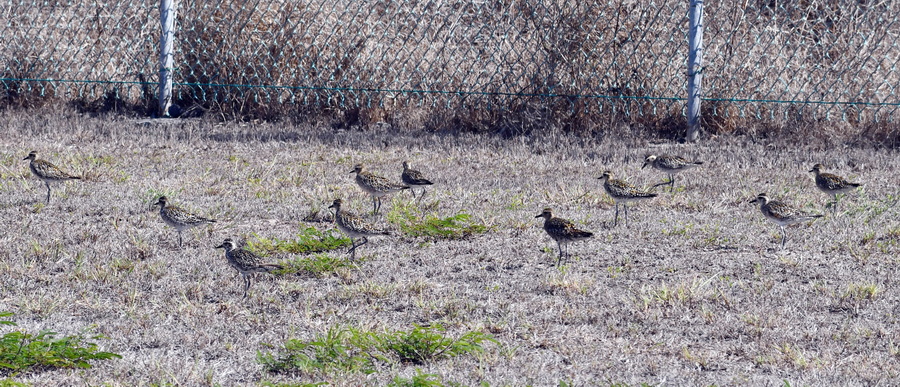 Although usually spread out on the sides of the Dillingham Airfield, these Kolea gathered on on the roadside during sky-diving activities. ©Susan Scott
Although usually spread out on the sides of the Dillingham Airfield, these Kolea gathered on on the roadside during sky-diving activities. ©Susan Scott 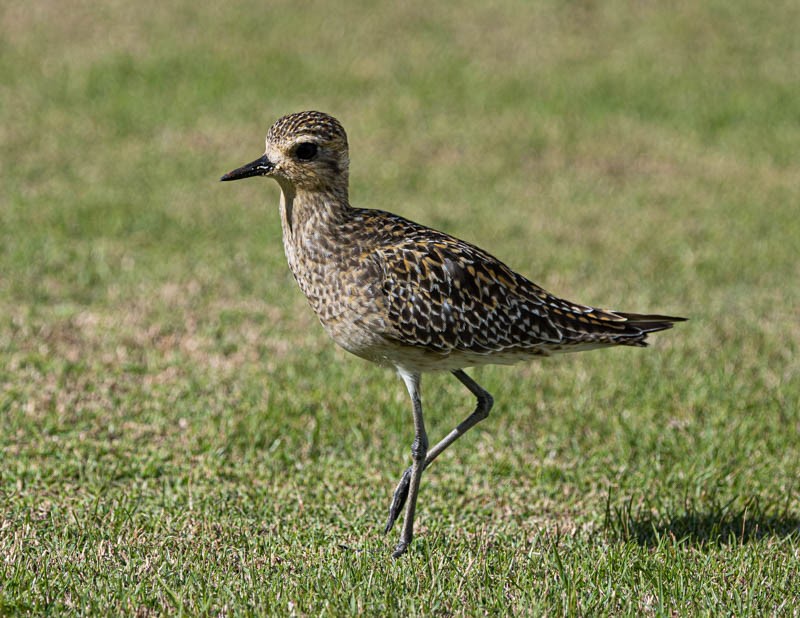
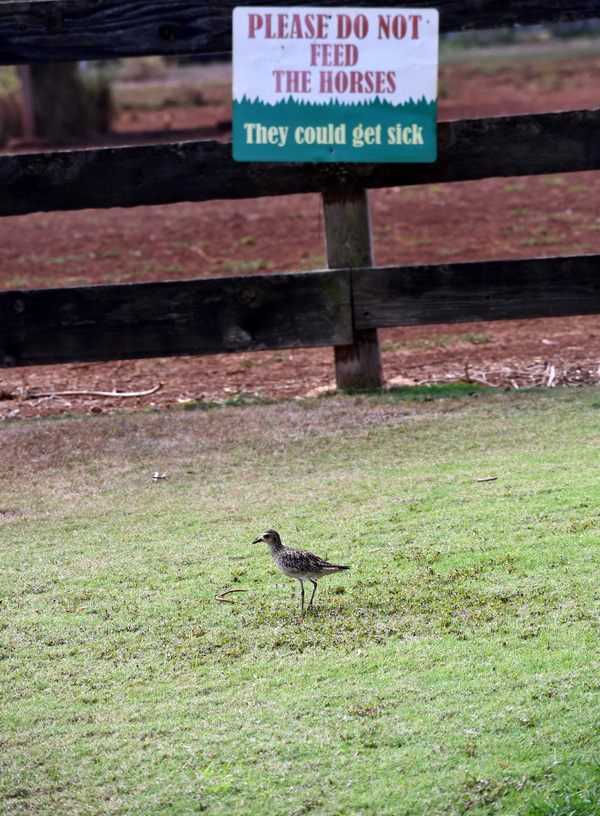 Ms. Ed. ©Susan Scott
Ms. Ed. ©Susan Scott 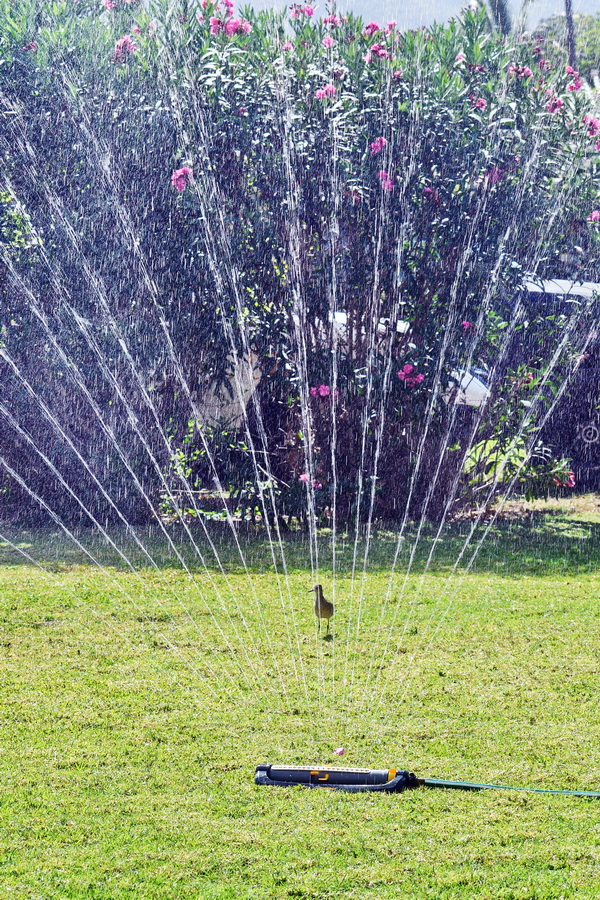 Bilbo taking a shower. ©Susan Scott
Bilbo taking a shower. ©Susan Scott 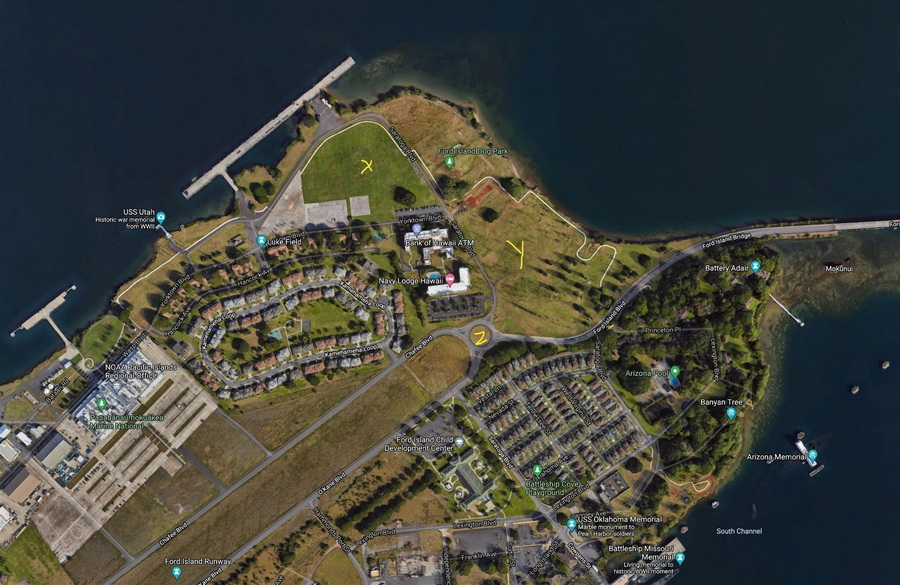 Roger Kobayashi sent a Google map of Ford Island, marking X, Y, and Z as to his first Kolea sightings, August 1, 2021.
Roger Kobayashi sent a Google map of Ford Island, marking X, Y, and Z as to his first Kolea sightings, August 1, 2021. 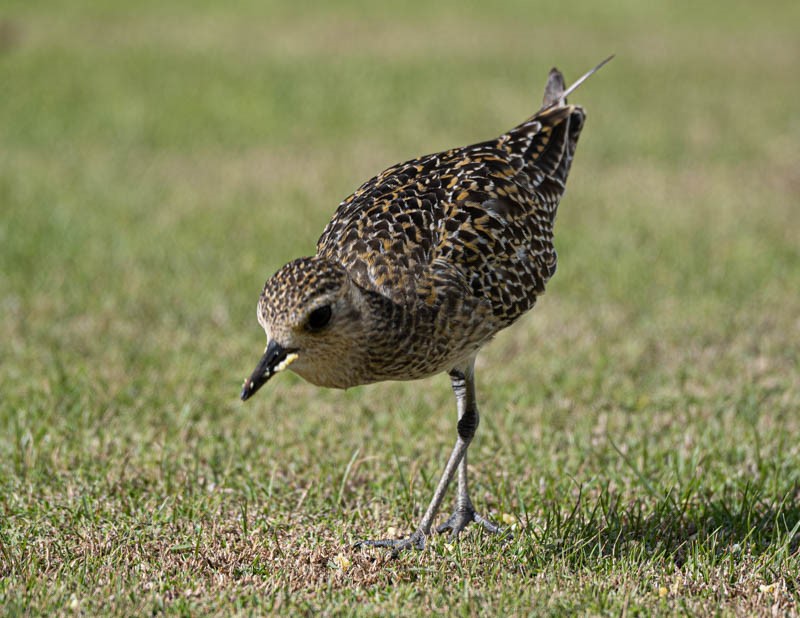 Wally, the bird, enjoying a scrambled egg offering. Please feed your bird only healthy food, such as scrambled egg or mealworms. ©Roger Kobayashi
Wally, the bird, enjoying a scrambled egg offering. Please feed your bird only healthy food, such as scrambled egg or mealworms. ©Roger Kobayashi 
 Mr. X in his territory in March, 2021 with all three leg bands. ©Sigrid Southworth.
Mr. X in his territory in March, 2021 with all three leg bands. ©Sigrid Southworth. 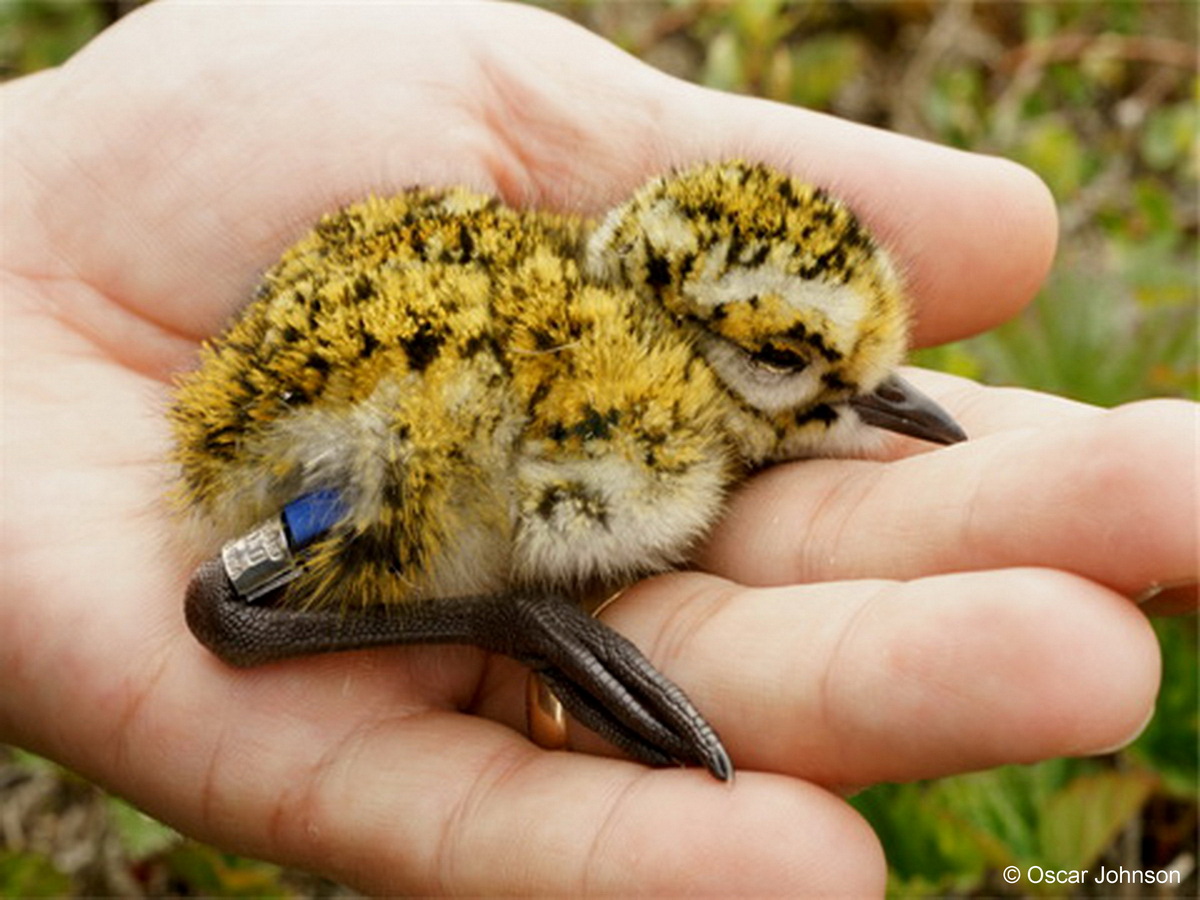 Researchers can place adult-sized leg bands, shown here, on newly hatched Kolea chicks. The youngsters begin foraging for insects and berries soon after hatching. Parents warm and protect their offspring, but do not feed them. Near Nome, Alaska © Oscar Johnson. …
Researchers can place adult-sized leg bands, shown here, on newly hatched Kolea chicks. The youngsters begin foraging for insects and berries soon after hatching. Parents warm and protect their offspring, but do not feed them. Near Nome, Alaska © Oscar Johnson. …